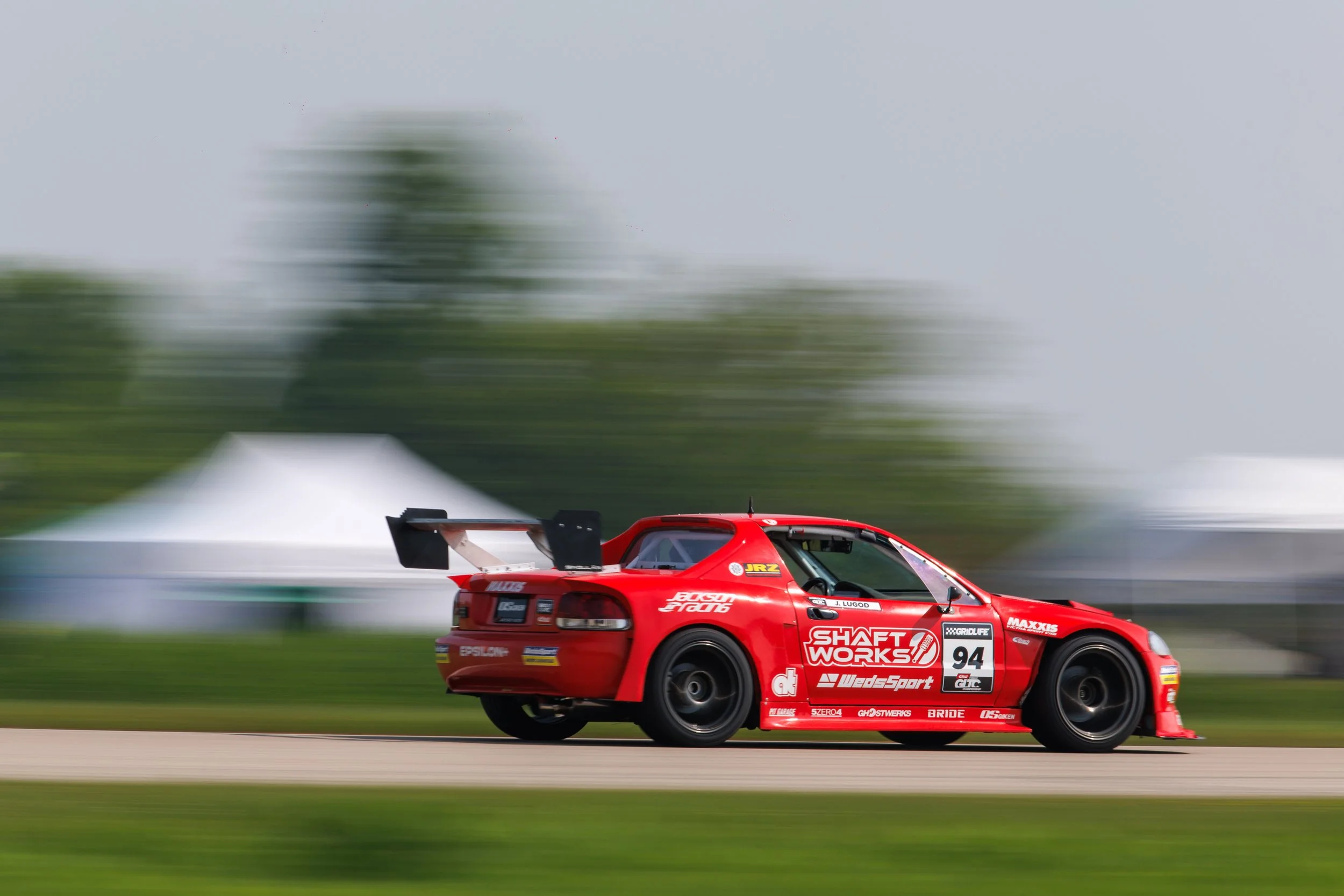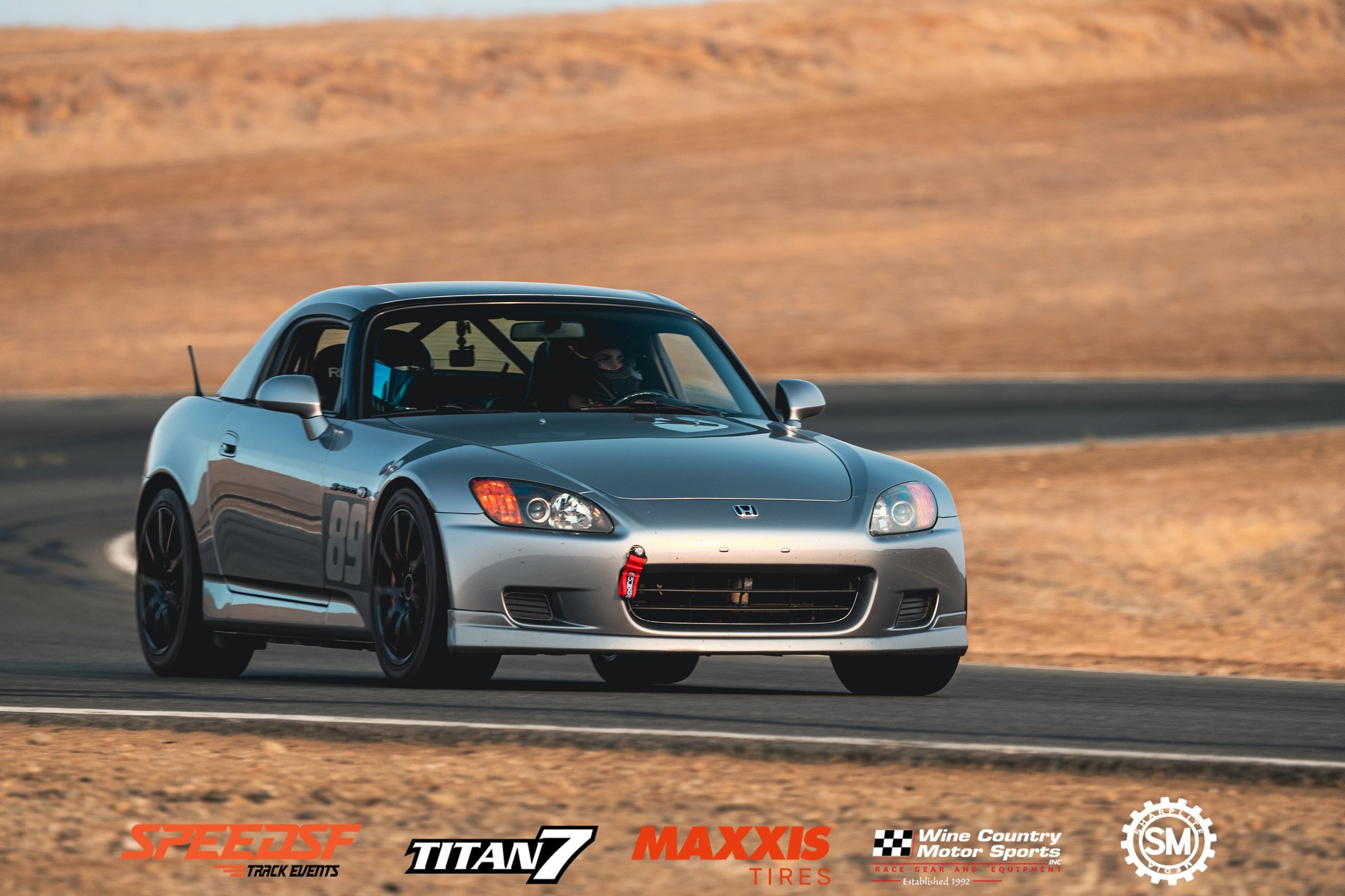
SpeedSF Blog
Every Build Has a Story – Meet the Cars of SpeedSF

Tony’s S2000: In the Right Circles
Built from the ground up, this R-Crew-tuned Honda S2000’s strong points are its suspension, its brakes, and its chassis. Meager power doesn’t mean much to Tony Altwer, who knows that optimizing this car’s strengths matter far more than improving straightline speed.

Jonathan’s Del Sol: Rotation on Demand
After years of tuning EGs and DC2s for autocross, Jonathan Lugod decided to build a dedicated track car using an uncommon chassis. The Del Sol shares of its parts with the aforementioned Hondas, but once caged, rotates like a CRX.

Ricky’s FK8: Bitten by the Bug
Studious and patient, Ricky’s experience tracking the FK8 Civic Type R has been mostly hassle free due to his careful selection of parts at a very measured rate.

Sean’s Exige: Keeping Him Honest
After getting tired of his Exige’s supercharged 2ZZ engine and its heatsoaking issues, Sean swapped in a K24 and developed this nimble platform. Now, while it might not have much power compared to most cars capable of running comparable lap times, it has the sort of manners, transparency, and grip that make it supremely fast and always engaging.

Markus’ EP3 Civic: Rapid Ascent
Sim racing laid the foundation, and then a milder EP3 before this one. When a track acquaintance put this K20A-swapped Civic up for sale, Markus didn’t hesitate to buy. With only 200 horsepower, it can lap Laguna in 1:40.

Alex’s FL5 Type R: Best of Both Worlds
The FK8 was too gaudy, the MX-5 was too cramped, and the FL5 was just right. When Alex was able to bring home a new Civic Type R for the occasional track outing, he knew he’d found the best possible compromise within his budget.

Joe’s AP1 S2000: Continuing Education
A couple years before forty, Joe Drane decided to finally give track days a try. Like with everything he’s pursued, he dove in with two feet and built a stunning S2000 in record time.

Fenton's Integra Type S: A Change of Heart
While he was on the fence for a while with Acura’s bigger, boatier Integra, the Type S had enough of the right stuff to convince him to try this front-wheel drive super sedan.

Jacek's M3: In Good Hands
By leaving some of the tough questions to the talented guys at R-Crew, Jacek’s been able to enjoy four stress-free years of regular tracking with this E46 workhorse. Simple, clean, seriously quick, and always willing to turn another lap—this car has it all.

Shan's S2000: Hitting the Books
After Shan spent his college years as a test driver for his Formula FSAE team, he started tracking an E92. The heavyweight M3 didn’t give him much joy, so, eager to get back into a pointy car, he picked up an AP2. With his engineering expertise, he’s been able to get the most from a modest assortment of modifications and turn this into a capable, dependable track scalpel.

Dustin's Supercharged M3: A Lesson in Applied Economics
With a full plate and a desperate need to go fast, Dustin managed to keep his head, get the right car, get the right coaching, make the right upgrades, and put prove just how quickly he could develop the established E46 into a 500-horsepower time attack machine.

Alex's AP1 S2000: Earning His Spurs
Tempted to try something livelier than his DC1, Alex bought himself an AP1 S2000 a few years back and learned how lively it really was. He chose his modifications with the aim of making it reliable and predictable, and in doing so, built a foundation upon which he could learn his craft.

Jake's S2000: Balance and the Best of All Worlds
Jake learned that he really can have it all with his AP1 S2000. Basic but capable, this particular car has just what’s needed and nothing more to make it unreliable. Plus, it looks better than most with a distinct coat of Porsche Chalk.

Sean's S2000: Happy To Take The Abuse
After jumping from Spec Miata to a Lotus Exige, Sean learned that his happiness had more to do with time spent at full throttle than outright speed. Not to say his Exige’s successor is slow, but his S2000 is a car which doesn’t have the same sort of technical limitations that kept him from pushing it as hard as he would’ve like to.
